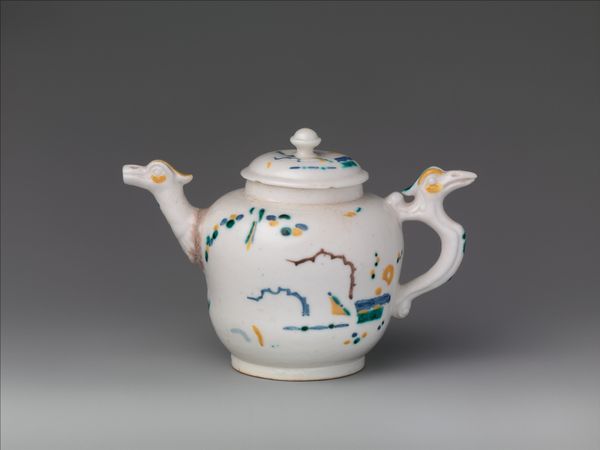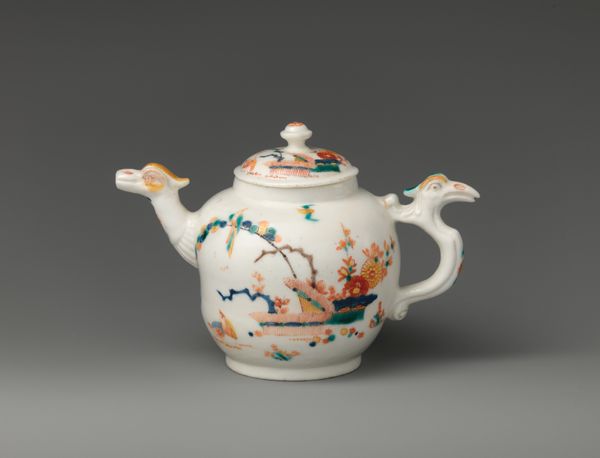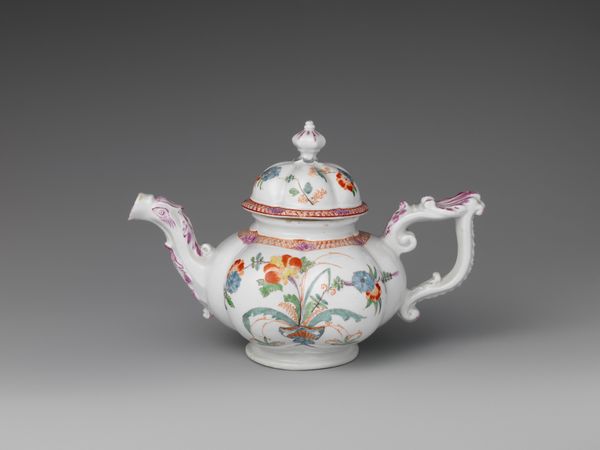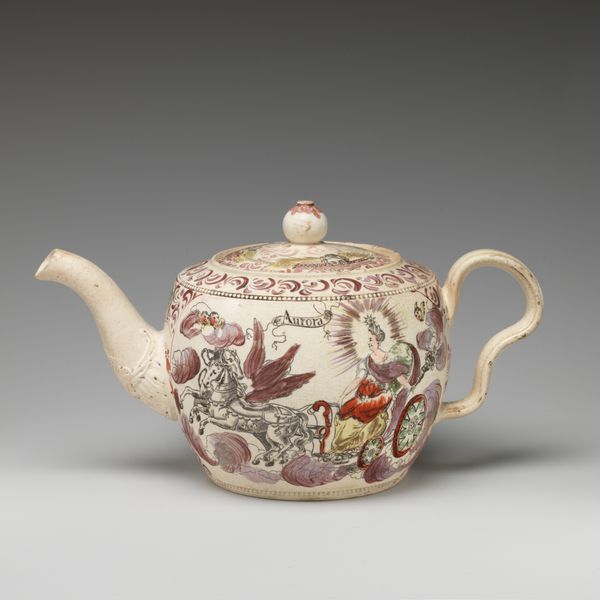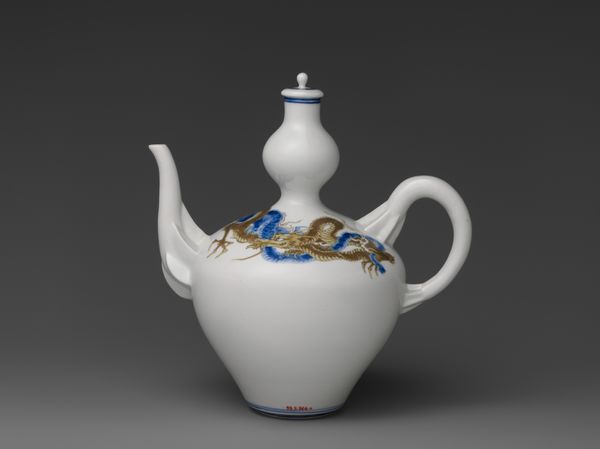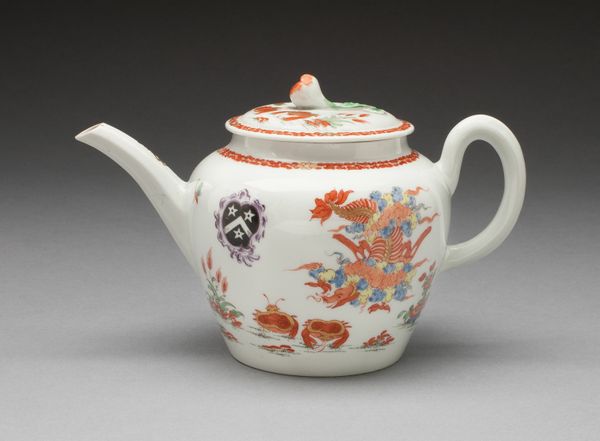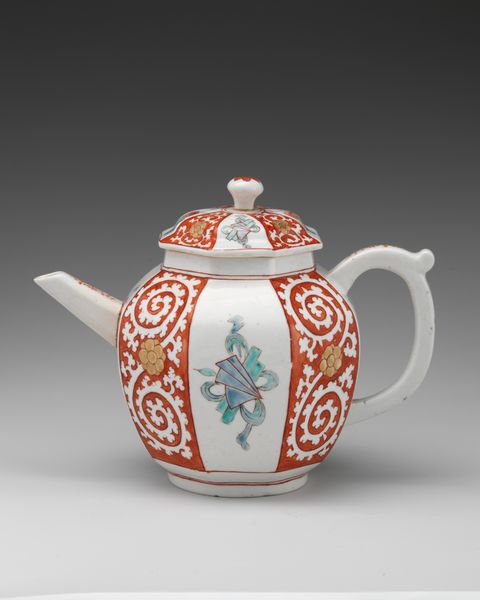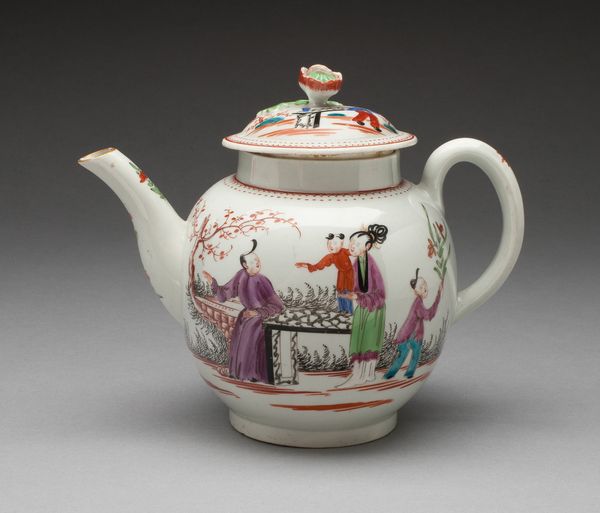
ceramic, porcelain, sculpture
#
ceramic
#
bird
#
porcelain
#
plant
#
sculpture
#
decorative-art
Dimensions: Overall (confirmed): 3 5/8 x 5 3/4 x 3 3/4 in. (9.2 x 14.6 x 9.5 cm)
Copyright: Public Domain
Editor: This is the “Teapot with storks,” crafted sometime between 1730 and 1745. It's porcelain from Chantilly, a ceramic sculpture actually. What a delightful piece of decorative art! It feels so light and whimsical to me, almost like it belongs in a fairy tale. What jumps out at you when you see this teapot? Curator: Whimsical, yes! It has a carefree spirit. The dancing storks immediately grab my attention, like a playful ballet frozen in porcelain. But let’s zoom out. It's French porcelain mimicking Chinese designs— a fashionable affair at the time! Do you notice how the artist adopted Chinese motifs and palettes? Editor: Now that you mention it, I see that in the color choices, but also those stylised plants that do feel distinctly Asian inspired. So, it’s like a French artist’s interpretation of Chinese art, all on a teapot! Were these types of items mostly for show or practical use back then? Curator: Both, really! Though let’s be honest, sipping tea from this would’ve been a rather luxurious affair. More about displaying status and refined taste, wouldn’t you say? I can imagine ladies in powdered wigs clinking cups around a table, discussing… what, fashion? Revolution? Stork gossip, perhaps? Editor: I love that image! This teapot seems far more interesting now, knowing all this. It's not just a pretty object; it tells a story about trade, artistry, and high society. Curator: Precisely! Isn’t it wonderful how a simple teapot can contain a whole world?
Comments
No comments
Be the first to comment and join the conversation on the ultimate creative platform.
